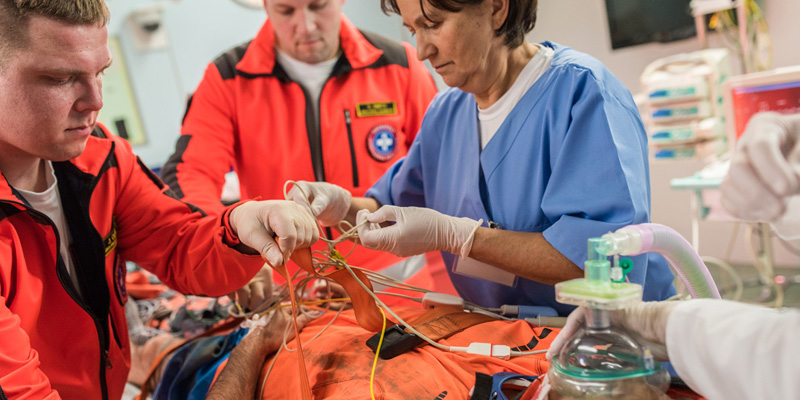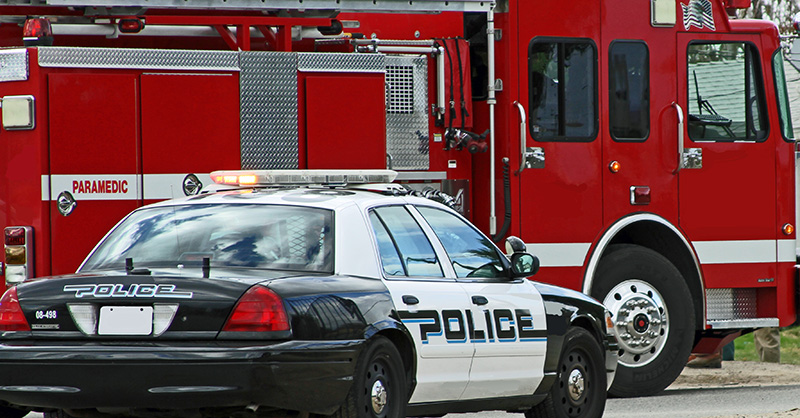Help Your Organization Understand Heroin Addicts’ Potential Lifesaver

In 2019, nearly 50,000 people died from overdoses involving opioids. As opioid abuse increases, public health officials have pushed to make Naloxone more widely available.
Naloxone temporarily blocks or reverses the side effects of opioids, including heroin, fentanyl, oxycodone, methadone, hydrocodone, morphine, codeine, Vicodin® and others. It is used to treat an opioid overdose in an emergency, but it is not a substitute for emergency medical care. Although available both as an injectable and a nasal spray, the nasal spray is gaining in popularity because it is a ready-to-use, 1 ml prefilled single dose. The drug takes effect in one-three minutes, usually before medical personnel can get to the subject.
It is important to remember that Naloxone is effective for opioid overdoses only. Side effects are rare and include opioid withdrawal, resulting in irritability, runny nose, sweating, nausea and vomiting. The only contraindication for use is for individuals allergic to the ingredients. There are no contraindications for use in children or the elderly.
How to detect symptoms of opioid overdose
- Unusual sleepiness and inability to wake the person with a loud voice or by rubbing firmly on the middle of the chest/ sternum
- Breathing problems including slow or shallow breathing in someone difficult to awaken or look like they are not breathing
- Pupils of the eye are very small (pinpoint) in someone difficult to wake up
- Pale clammy skin or bluish tint; cyanosis
Current laws
In October of 2018, the SUPPORT for Patients and Communities Act was signed into law. SUPPORT provides addiction medicine education; standardized the delivery of addiction medication and expand access to medication. As of July 2021, Naloxone is available as an over-the-counter medicine in all 50 states and can be purchased from a pharmacist. The majority of states now provide either criminal or civil immunity for opioid users who seek medical treatment for an overdose and those who report an overdose. As the need for Naloxone increases, so does its cost and depending upon the opioid’s strength, more than one dose may be necessary. To help combat overdoses in younger populations, Adapt Pharmaceuticals has offered more than 40,000 free doses to high schools and colleges.
What policies should you consider when administering Naloxone?
Develop a simple strategy/policy for responding to overdose at your facility. All staff should receive training on the brand and administration of Naloxone in use at the facility.
Complete an incident report immediately if Naloxone is administered and the dosage should be replaced as soon as possible. Review all incident reports monthly.
Develop a simple strategy for responding to overdose at your facility
Policy Statement Example
SCARE ME Training
- S. SIGNS of overdose include no response to stimulation, blue lips, slowed or stopped breathing.
- C. COMMUNICATE with emergency personnel. Summon emergency medical assistance as soon as possible since Naloxone’s effects can wear off in 20-90 minutes.
- A. AIRWAY Clear the subject’s airway.
- R. RESCUE breathing: pinch off nose and give two quick breaths every five seconds.
- E. EVALUATE respiration, responsiveness and general physical condition.
- M. MUCOSAL (nasal spray) into each nostril or by muscular injection. Continue rescue breathing if necessary until medical personnel arrive.
- E. EVALUATE overall condition again and administer a second dose if necessary.
How should you store Naloxone?
Naloxone is not a controlled substance and does not need to be kept in locked storage. Although it does not provide a ‘high’, it could be subject to theft, and like other medications, should not be left in the open. It should be stored at room temperature 59-70 degrees F and in a dark place. Do not freeze or expose Naloxone to freezing temperatures. Since more than one dose may be needed for each incident, more than one dose should be on hand at all times. In organizations that may have a greater potential for an overdose, stocking additional doses may be necessary.
Check supply and expiration date at the beginning of each shift. Because Naloxone loses effectiveness over time, any expired product should be disposed of according to local regulations and manufacturer’s directions.
Sources
Centers for Disease Control, Opioid Data Analysis & Resources, March 10, 2021.
H.R. 6, 155th Congress, November 24, 2018.
Adapt Pharma Expands Free NARCAN® Nasal Spray Program to U.S. Colleges and Universities press release, issued April 10, 2017.
How to Get Narcan, Narcan.com, August 8, 2020.
Opiate Recovery Podcasts Narcan Administration Training, SCARE ME.
For additional Loss Control guidance, please visit the Plan & Protect safety hub.

.jpg?sfvrsn=59fc2eb1_1)












